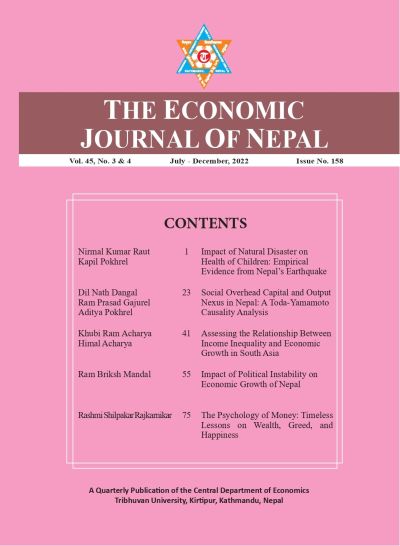Impact of Political Instability on Economic Growth of Nepal
DOI:
https://doi.org/10.3126/ejon.v45i3-4.63149Keywords:
Political Instablity, Economic Growth, Co-integration, ARDL model, NepalAbstract
This study examines the impact of political instability on the economic growth in Nepal for the period from 2002 to 2021. The study analyzes the existence of the long run relationship between political indicators such as control of corruption, government effectiveness, political stability and absence of violence/terrorism, rule of law, regularity quality and micro economic indicator inflation and the GDP percapita. The study utilized time series data analysis, using annual data covering the period of 2002 to 2021 of Nepal. The empirical results of the study, using the ARDL model, highlight the impact of different political instability indicators on economic growth. Moreover, these results indicate that there is a long run relationship between the political indicators on the economic growth. More specifically, the results show that the inflation and regulatory quality indicators have a negative impact on economic growth, while the political stability and absence of violence/terrorism has the minimal impact in the long run. Similarly, the result of control of corruption shows a positive impact on the economic growth in the short run.
Downloads
Downloads
Published
How to Cite
Issue
Section
License
© Cedecon-TU




